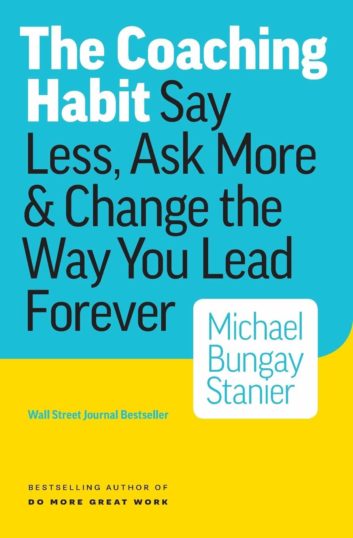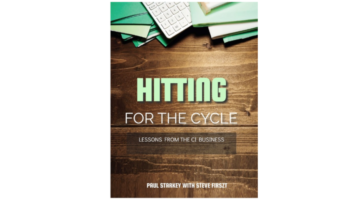
Michael Bungay Stanier has dedicated his life to helping leaders adopt a “coach-like” style that can completely revolutionize an organization. His book, The Coaching Habit, is the best-selling coaching book of this century, with over 700,000 copies sold and 1000+ five-star reviews on Amazon. Thinkers50, the Oscars of management, named him the #1 thought leader in coaching in 2019.
I was absolutely impressed with the way Stanier breaks coaching down into easily understood and applicable concepts. Coaching, as opposed to managing, can get the most out of an individual through unlocking their innate potential and allowing them to expand their abilities far beyond a specific position.
Stanier begins by suggesting that building a coaching habit can break three vicious circles that so often afflict the workplace:
Creating Overdependence: Helping people is fine until they ultimately need your assistance, input, and guidance on a constant basis. You are only one person, and this demand makes you the point of constraint in accomplishing anything. The more you help them, the more they need your help.
Getting Overwhelmed: Often the sheer quantity of work pulls you in so many directions that you become distracted and your priorities are affected so as to pull you in the wrong direction.
Becoming Disconnected: Suddenly the things that really matter and will drive the company forward are pushed aside by projects and efforts you have delegated to others. You become frustrated and demotivated.
Check out all the titles in the Dave Donald Business Book Club
So much of this process is rooted in communication with your team. Through a series of seven types of questions, Stanier posits that you can eliminate these circles and help your people to be more self-sufficient, responsible, and effective.
1. The Kickstarter Question: “What’s on your mind?”
This question is very open and transparent. It allows someone to talk about challenges and problems that are important to them. Coaching for performance is about the nuts and bolts of daily activity and improving the processes and actions that will lead to greater success. Coaching for development — actually improving the individual — is about changing the focus from the task itself to the person who is performing the task. These tend to be rare conversations, but can be significantly more powerful.
2. The AWE Question: “And what else?”
This question broadens the discussion and invites deeper insight. It expands opportunities and options and helps uncover hidden challenges that may be the cause of a problem instead of just a symptom. Don’t be afraid to ask the AWE question several times until the person you are coaching says, “There is nothing else?” Three-to-five answers is a sign of success, and you can move on from there.
3. The Focus Question: “What is the real challenge here for you?”
Notice that it’s not about discovering the challenge or even the most important challenge. This is about uncovering the challenge that matters most to this specific person. The challenge that is holding them back or obstructing their progress. If the person cites several challenges, ask them, “If you had to pick one of these to focus on, which one would it be?”
4. The Foundation Question: “What do you want?”
Most people don’t know or at least haven’t taken the time to critically define what they want. Even if you get a reasonable answer, pushing a bit further with, “What do you really want?” will often elicit moments of silence if not a bit of confusion. Wants tend to be surface elements driven by deeper needs. Stanier indicates there are nine basic human needs: Affection, Creation, Recreation, Freedom, Identity, Understanding, Participation, Protection, and Subsistence. Diving into the actual needs of the individual can have a dramatic effect on their performance as well as their overall happiness in their daily activities.
5. The Lazy Question: “How can I help?”
Why isn’t this the first question? We could have saved a lot of time. Because your previous inquiries have invited the person into a space that feels safe, they feel understood and their opinions are respected. Instead of trying to interpret what they need from you, just ask. You will often find that their request is much less than you expected.
6. The Strategic Question: “If you say yes to this, what are you saying no to?”
This give boundaries and focus to the request. Commitment to the idea, concept, or action is always going to have some type of limit or restriction. Exploring those limits at the outset, especially in the words of the person you are coaching, will establish expectations that can be defined and agreed upon.
7. The Learning Question: “What was most useful for you?
If you want a person to improve, they will need to remember what they’ve learned. This question requires them to reflect on the interaction and consider the outcome. This is not only valuable to them, but to you as a coach as well. It will let you know what area to focus on the next time you have this conversation.
As a brief summary, I hope this has whet your appetite for a deeper dive into the process. Learning to be an effective coach will benefit your entire team and deliver results that will have a lasting effect on your company.







